[ENG] Buildings of the Historic Center of Quito [ESP] Edificaciones del Centro histórico de Quito
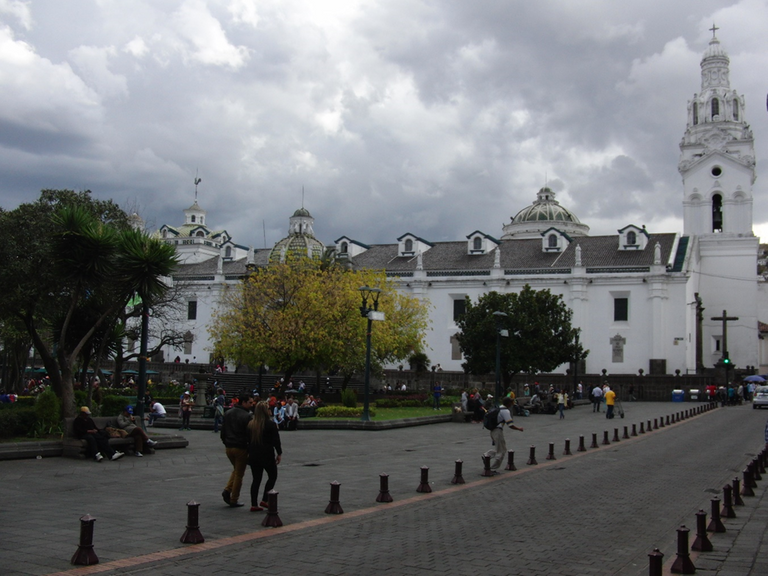
Estimados amigos de las comunidades que me honran con su lectura y sus votos, en esta oportunidad daremos un paseo virtual por el Centro histórico de Quito, considerado como la zona de la capital del Ecuador donde se encuentran ubicadas las edificaciones icónicas de la ciudad. Tendremos el placer de disfrutar algunas fotos tomadas por mi concuñada Violeta Vidal sobre este lugar bellísimo e historicamente rico
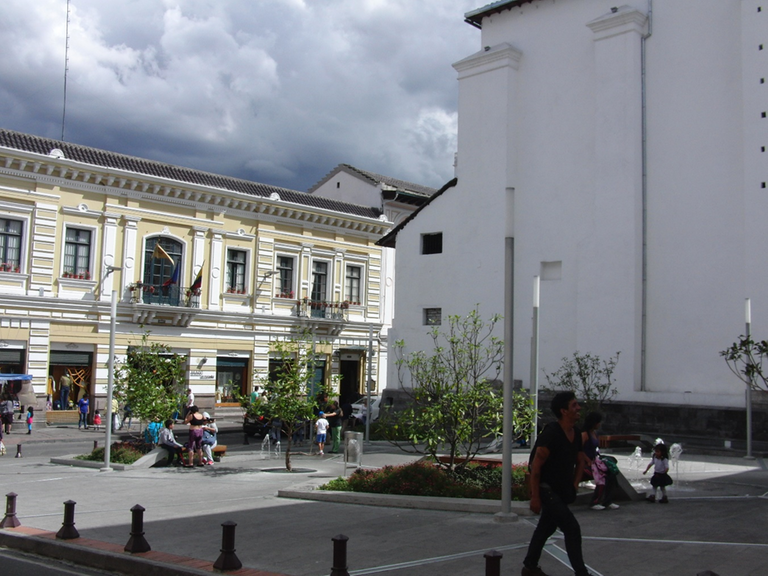
El centro histórico de Quito, parroquia del área metropolitana, tiene una superficie de 375 ha. y es considerado el conjunto mejor preservado e importante de Hispanoamérica; se calcula que allí se encuentran unas 130 edificaciones con diversos estilos arquitectónicos. Por hoy, solo les mostraremos, además de la Plaza Mayor, tres edificaciones que esperamos satisfagan sus gustos estéticos.

Iniciamos nuestro recorrido virtual en la plaza mayor, cuyo nombre es Plaza de la Independencia, rodeada de jardines de flores, árboles y palmeras, se encuentra a 2818 metros sobre el nivel del mar, cubre una superficie de 8100 metros cuadrados, un cuadrado perfecto de 90 metros lineales por cada lado; en medio de ella se levantó el monumento a la Libertad en 1809. Se encuentra flanqueada por obras, tales como la Catedral Metropolitana, también conocida como Catedral Primada del Ecuador desde 1995, el Palacio Arzobispal y el Palacio presidencial de Carondelet, además de varios edificios como el Palacio Municipal de Quito.
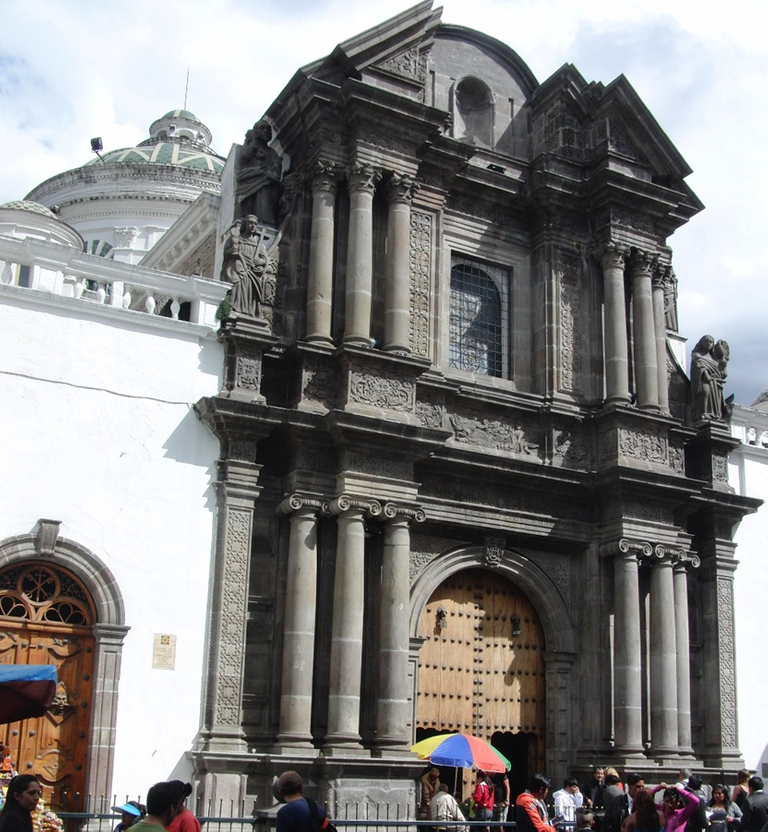
La primera edificación que llama la atención es la Catedral, ubicada sobre la calle García Moreno, la cual fue construida en los siglos XVII y XVIII, bajo la supervisión del sacerdote jesuita Marcos Guerra, quien se encargó de realizar los trabajos de cimentación en una quebrada, realizando perforaciones en un terreno con declives, que alcanzaron desde los 14 hasta los 3 metros de profundidad. Posteriormente, el arquitecto José Jaime Ortíz fue contratado para levantar allí la iglesia en 1694.
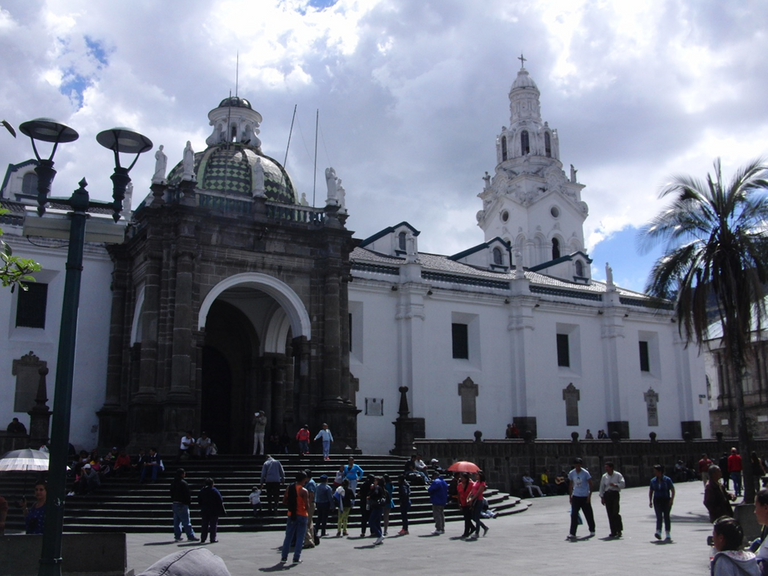
La construcción de la Catedral, en estilo gótico-mudéjar, fue terminada en más de 20 años, una primera parte en 1706 y se completó la estructura en 1715; empero, los retablos se terminaron en 1732 y 1747. La iglesia cuenta con tres naves separadas por pilares y arcos apuntalados. Junto a la puerta principal se levanta el campanario.
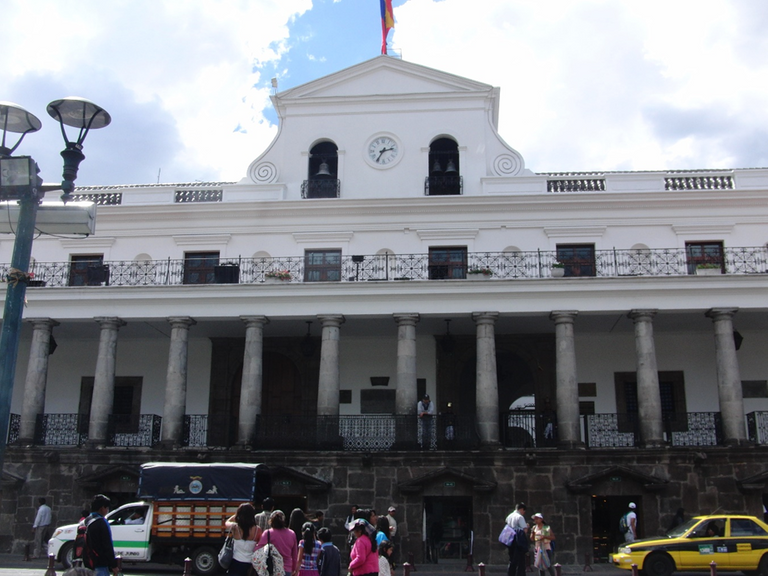
Pasemos ahora a conocer un poco del Palacio presidencial o Palacio de Carondolet, el cual es de estilo neoclásico de la época colonial, diseñado por el arquitecto Antonio García en 1790 a un costado de la Plaza. En su fachada se pueden apreciar unas altas columnas; fue la sede del gobierno y residencia del presidente hasta 2007, cuando fue convertido en museo y considerado Patrimonio Cultural del Ecuador. El nombre de Carondolet se lo puso el Libertador Simón Bolívar, pues fue ese personaje quien mandó a reconstruir el Palacio que se encontraba en ruinas por el terremoto de 1797. Se especula que fue levantado sobre las ruinas del palacio del inca Atahualpa.
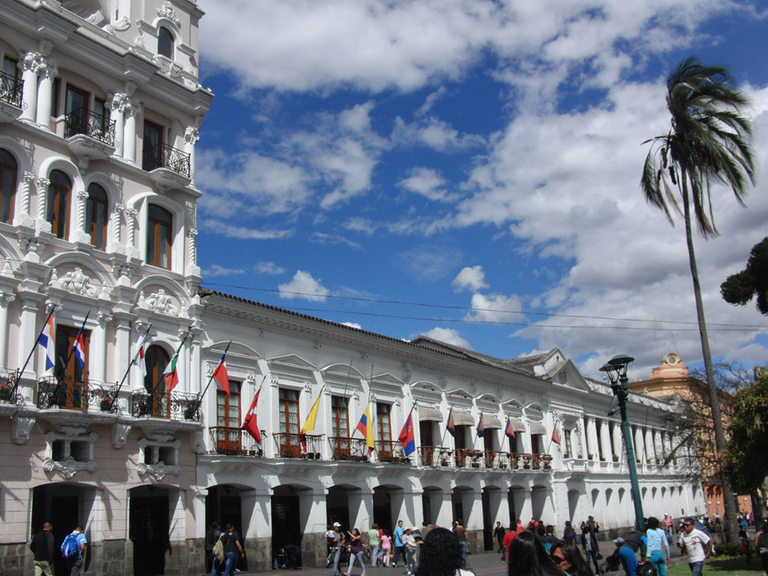
Por último, realizaremos una mirada al Palacio Arzobispal, construido a un costado de la Plaza en 1700, sede del arzobispado ecuatoriano desde el siglo XVI, es considerado uno de los edificios más antiguos de Quito; el edificio ha sufrido varias modificaciones desde 1775, cuando el arquitecto español Antonio García introdujo el estilo historicista (neoclásico), con columnas de ladrillo en el portal; en 1852 se le realizó un rediseño que le confirió el aspecto que hoy apreciamos. Sin embargo, sufrió nuevos cambios, en la segunda mitad del siglo XX, cuando una parte del palacio fue restaurada. En la actualidad, en el edificio funcionan almacenes de artesanías, galerías y restaurantes.

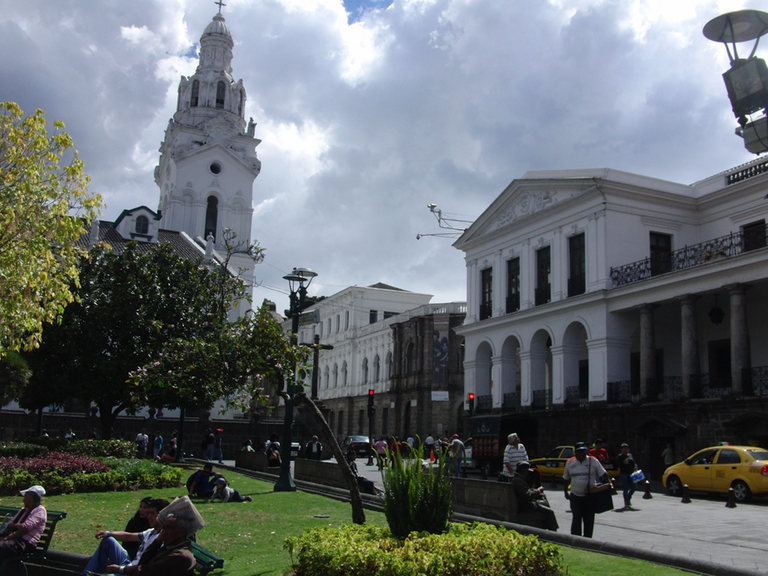
Dear friends of the communities that honor me with your reading, this time we will take a virtual walk through the Historic Center of Quito, considered as the area of the capital of Ecuador where the iconic buildings of the city are located. We will have the pleasure of enjoying some photos taken by my sister-in-law Violeta Vidal on this beautiful place, where you can see the “Plaza de la Independencia”, the Cathedral and the Presidential and Archbishop's palaces.
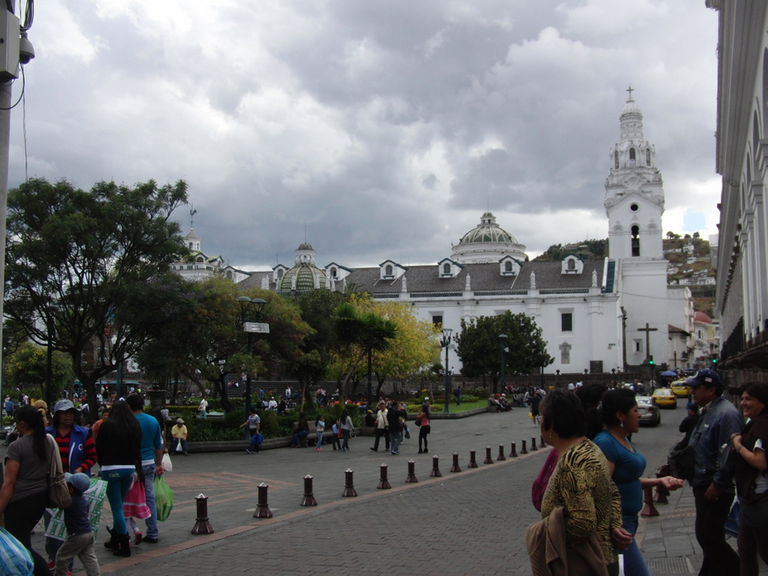
The historic center of Quito, a parish in the metropolitan area of the Capital, has an area of 375 hectares and is considered the best-preserved and most important complex in Latin America; it is estimated that there are about 130 monumental buildings with different architectural styles. For today, we will only show you, in addition to the Plaza Mayor, three buildings that we hope will satisfy your aesthetic tastes.
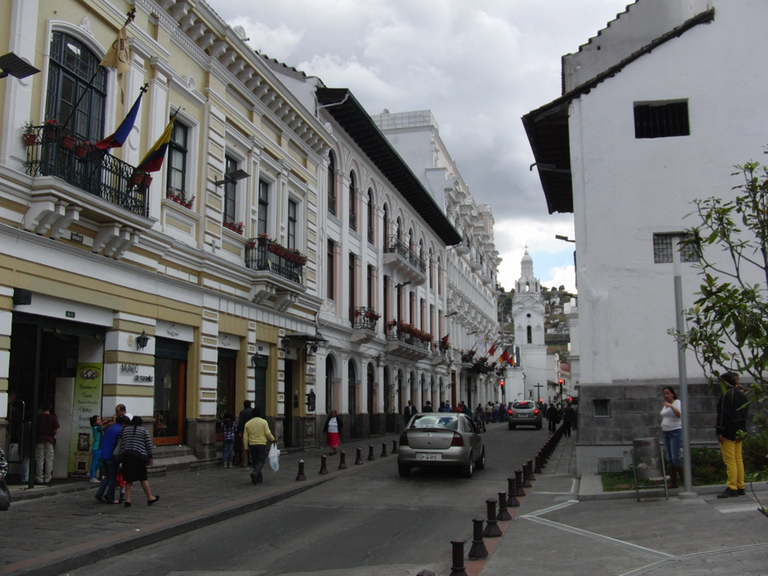
We start our virtual tour in the main square of the city, whose real name is “Plaza de la Independencia”, surrounded by flower gardens, trees, and palm trees, it is 2818 meters above sea level, it covers an area of 8100 square meters, a perfect square of 90 linear meters on each side; in the middle of it, the monument to Freedom was erected in 1809. It is flanked by works, such as the Metropolitan Cathedral, also known as the Primate Cathedral of Ecuador since 1995, the Archbishop's Palace, and the Presidential Palace of Carondelet, in addition to several buildings as the Municipal Palace of Quito.

The first building that draws our attention is the Cathedral, located on García Moreno street, which was built in the 17th and 18th centuries, under the supervision of the Jesuit priest Marcos Guerra, who was in charge of carrying out the foundation work in a ravine, drilling in terrain with slopes, which reached from 14 to 3 meters deep. Later, the architect José Jaime Ortíz was hired to build the church there in 1694.
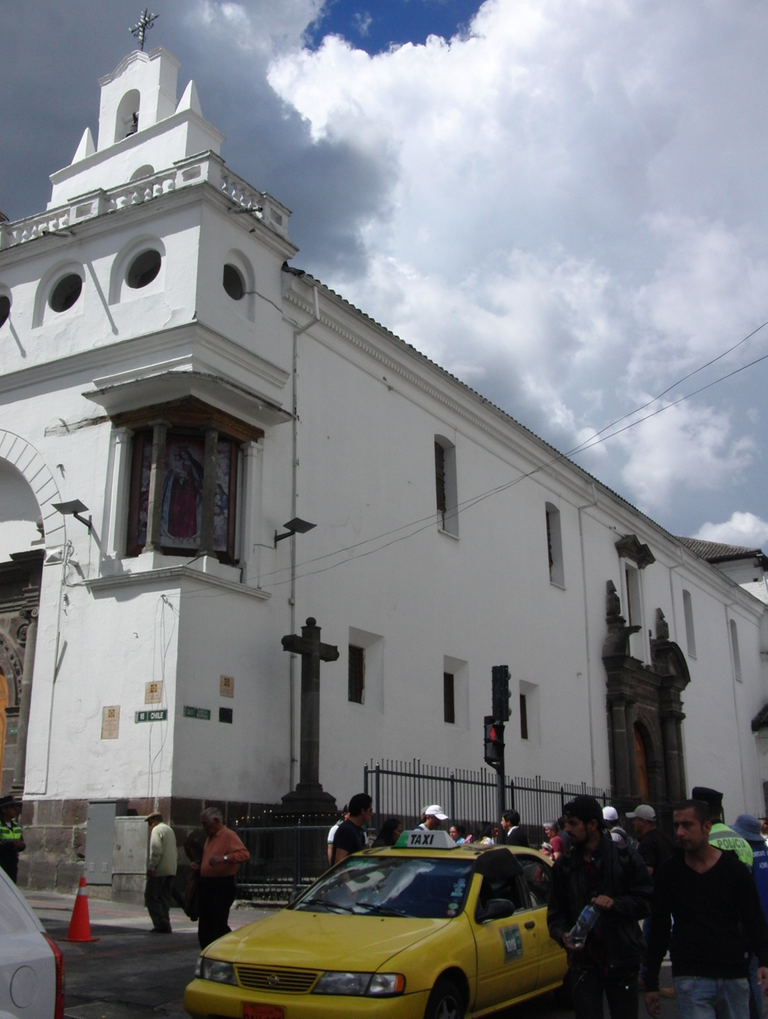
The construction of the Cathedral, in the Gothic-Mudejar style, was completed in more than 20 years, the first part in 1706, and the structure was completed in 1715; however, the altarpieces were completed in 1732 and 1747. The church has three naves separated by pillars and propped arches. Next to the main door stands the bell tower.
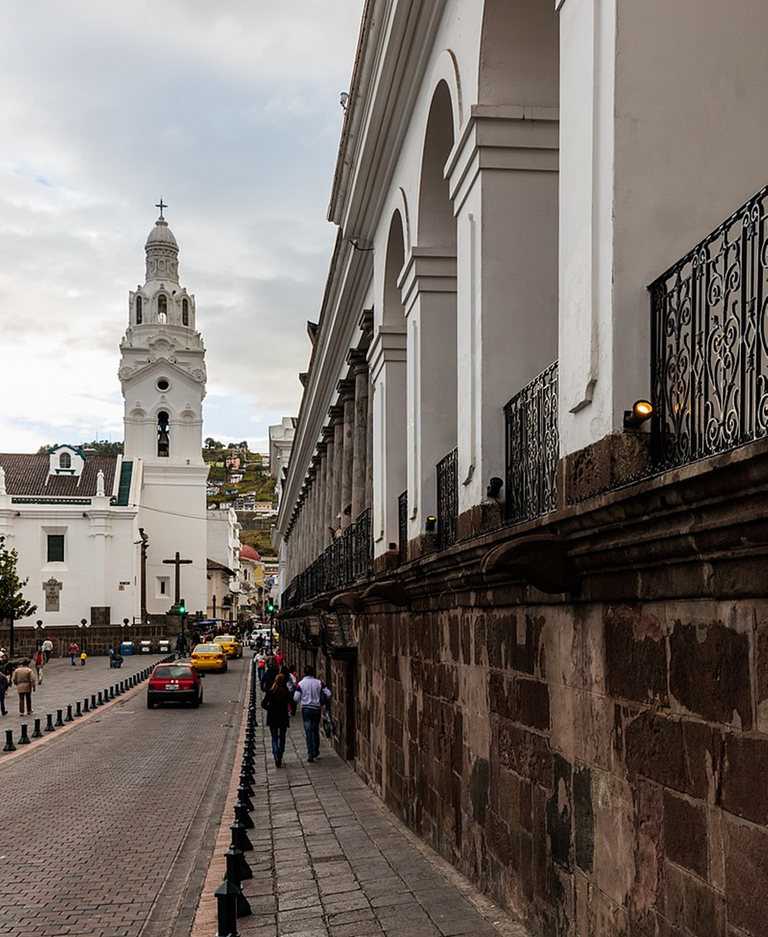
Let's now get to know a little about the Presidential Palace or Palacio de Carondolet, which is neoclassical in style from the colonial era, designed by the architect Antonio García in 1790 on one side of the Plaza. On its façade you can see some tall columns; It was the seat of government and residence of the president until 2007 when it was converted into a museum and considered Cultural Heritage of Ecuador. The name of Carondolet was given by the Liberator Simón Bolívar since it was that character who ordered the reconstruction of the Palace that was in ruins due to the earthquake of 1797. It is speculated that it was built on the ruins of the palace of the Inca Atahualpa.
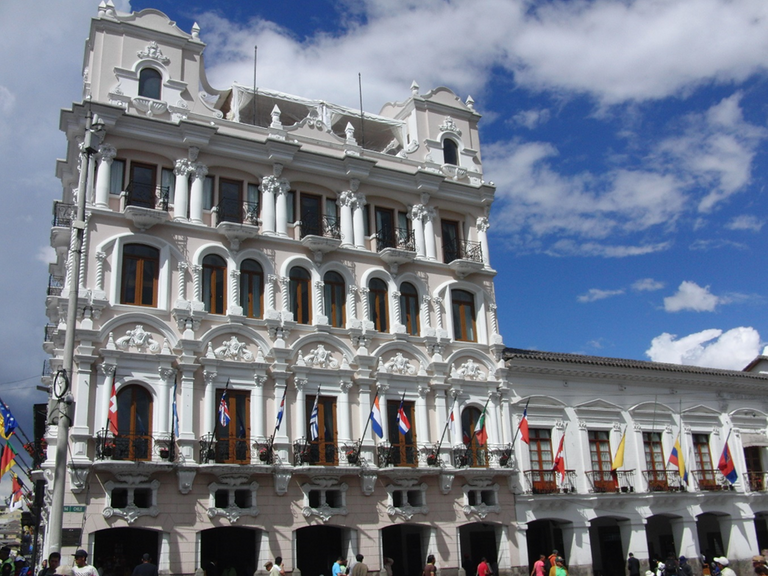
Finally, we will take a look at the Archbishop's Palace, built next to the Plaza in 1700, the seat of the Ecuadorian archbishopric since the 16th century, it is considered one of the oldest buildings in Quito; the work has undergone several modifications since 1775, when the Spanish architect Antonio García introduced the historicist (neoclassical) style, with brick columns in the portal; in 1852 it underwent a redesign that gave it the appearance that we appreciate today. However, it underwent new changes, in the second half of the 20th century, when a part of the palace was restored. Currently, the building houses craft stores, galleries, and restaurants.
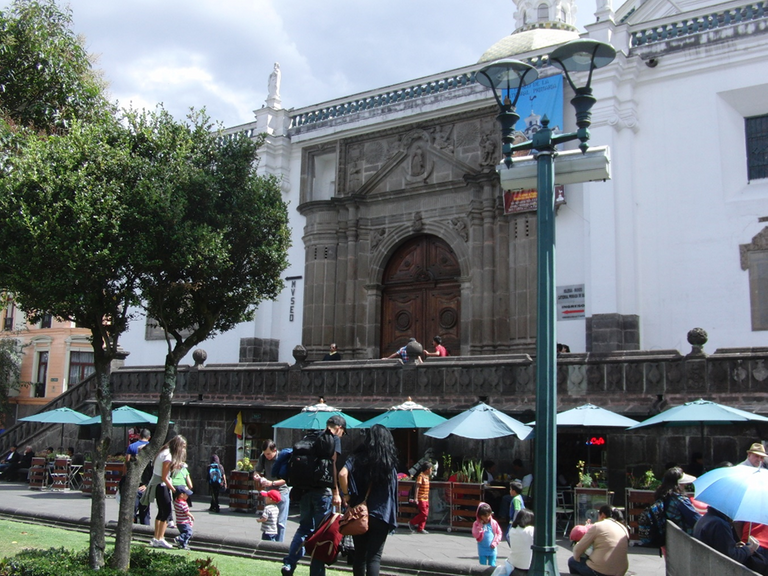
Congratulations, your post has been added to Pinmapple! 🎉🥳🍍
Did you know you have your own profile map?
And every post has their own map too!
Want to have your post on the map too?
Good morning friends of Pinmapple, thank you for putting my post on your map. Happy week for everybody.
Hello dear friend @besamu I greet you with respect and affection. Thank you for giving us that interesting tour of Quito's Plaza Mayor or Plaza Independencia. Colonial architecture has always caught my attention, especially religious and military architecture. Receive a strong and warm spiritual hug full of blessings and lots of light.
Good morning dear colleague and friend marcosmilano, thank you for your comment. It is a pleasure to make known the wonders that we have in Latin America. Receive a brotherly hug
Buenos días estimado colega y amigo marcosmilano, gracias por su somentario. es un placer dar a conocer las maravillas que tenemos en la América Latina. Reciba un fraternal abrazo
Thank you for sharing this amazing post on HIVE!
Your content got selected by our fellow curator @priyanarc & you just received a little thank you via an upvote from our non-profit curation initiative!
You will be featured in one of our recurring curation compilations and on our pinterest boards! Both are aiming to offer you a stage to widen your audience within and outside of the DIY scene of hive.
Join the official DIYHub community on HIVE and show us more of your amazing work and feel free to connect with us and other DIYers via our discord server: https://discord.gg/mY5uCfQ !
If you want to support our goal to motivate other DIY/art/music/homesteading/... creators just delegate to us and earn 100% of your curation rewards!
Stay creative & hive on!
Good morning diyhub friends, I thank the curator @priyanatc for selecting my post and voting for it. I wish you a very profitable and blessed week.
Undoubtedly, one aspect that unites Latin American countries is that they have preserved that particularity in architecture, which all have had some influence and similarities, although some nations have had a better development of it. With that said, this tour reminds me of Caracas. Greetings and thanks for sharing this excellent post.
!discovery 35
Good morning wilfredocav, you are right about the preservation and influence of colonial architecture in Latin American countries, only that, in the case of Ecuador and even more so in the city of Quito, the maintenance and conservation policy has been sustained over time perhaps influenced by the UNESCO declaration. It is not just the historic center, but the entire city, including the colonial part. The case of Caracas would merit a long conversation due to the ups and downs in the maintenance and conservation of what little remains of the time. Thank you very much for your comment, receive my best regards.
This post was shared and voted inside the discord by the curators team of discovery-it
Join our community! hive-193212
Discovery-it is also a Witness, vote for us here
Delegate to us for passive income. Check our 80% fee-back Program
Hello dear friends of discovery-it, I am grateful to you for sharing and voting my post inside the discord by the curators team of discovery-it. Receive a cordial greeting and my wishes for the rest of the week in peace, health and well-being
https://twitter.com/wilfredocav/status/1544834778075201538
The rewards earned on this comment will go directly to the people( @wilfredocav ) sharing the post on Twitter as long as they are registered with @poshtoken. Sign up at https://hiveposh.com.
Hello Poshtoken friends, I thank Wilfredo Campos for having posted my post on Twitter. Happy weekend.
Potential source of photography plagiarism 1
Potential source of photography plagiarism 2
The image you posted is the primary source of value for your post or you have posted an image in one of the photography/art curated tags without attribution or source. By doing so you are claiming to be the sole content creator and that the image is original to yourself.
Plagiarism is the copying & pasting of others' work without giving credit to the original author or artist. This includes manually reproducing the work of others.
Guide: Why and How People Abuse and Plagiarise Repeated plagiarism is considered fraud.
Fraud is discouraged by the community and may result in the account being Blacklisted.
If you believe this comment is in error, please contact us in #appeals in Discord.
Dear friends of Hivewatchers, first of all I apologize for not having responded sooner, but just today I am much better from an illness that kept me in bed for several days. Just to ask, forgive me for my mistake in not observing that my sister-in-law had sent me photos of the city of Quito, one of which I had in stock as a reference for my posts, marked as plagiarismm 1. The one marked as plagiarism 2 has the reference of where I took it. I am so embarrassed that I made that mistake which I hope I never make in the future. Let us receive words of gratitude for having made me notice the mistake I made.